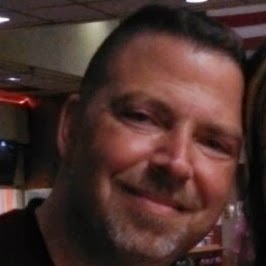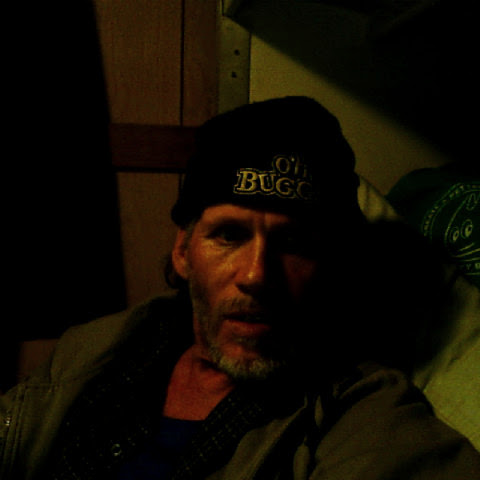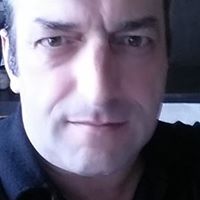Ken A Healy
age ~45
from Burlington, MA
Ken Healy Phones & Addresses
- Burlington, MA
- Cambridge, MA
- Auburn, AL
- Irvine, CA
- Philadelphia, PA
Isbn (Books And Publications)
-
The New Art Of Making Beer
view source -
Author:Ken Healy
-
ISBN #:0452269393
Wikipedia References

Ken Healy
Resumes

Principal Scientist
view sourceLocation:
Cambridge, MA
Industry:
Biotechnology
Work:
Oxford Nanopore Technologies since Dec 2012
Principal Scientist
University of Pennsylvania Nov 2007 - Dec 2012
Postdoctoral researcher
University College Cork, Ireland (UCC) Aug 2011 - Aug 2012
Marie Curie Postdoctoral Research Fellow
UC Irvine Aug 2009 - Jul 2011
Marie Curie Postdoctoral Research Fellow
University College Cork, Ireland (UCC) Dec 2006 - Nov 2007
Postdoctoral researcher
Principal Scientist
University of Pennsylvania Nov 2007 - Dec 2012
Postdoctoral researcher
University College Cork, Ireland (UCC) Aug 2011 - Aug 2012
Marie Curie Postdoctoral Research Fellow
UC Irvine Aug 2009 - Jul 2011
Marie Curie Postdoctoral Research Fellow
University College Cork, Ireland (UCC) Dec 2006 - Nov 2007
Postdoctoral researcher
Education:
University College Cork 2002 - 2006
PhD, Nanopore-based DNA analysis University College Cork 1998 - 2002
BE, Electrical and Electronic Engineering
PhD, Nanopore-based DNA analysis University College Cork 1998 - 2002
BE, Electrical and Electronic Engineering

Ken Healy
view source
Ken Healy
view source
Ken Healy
view source
Ken Healy
view source
Ken Healy
view sourceLocation:
United States

Vice President At University Of New Jersey
view sourceLocation:
United States
Industry:
Education Management

Ken Healy
view sourceUs Patents
-
Graphene-Based Nanopore And Nanostructure Devices And Methods For Macromolecular Analysis
view source -
US Patent:20130309776, Nov 21, 2013
-
Filed:Jul 20, 2012
-
Appl. No.:13/553853
-
Inventors:Marija Drndic - Philadelphia PA, US
Ken Healy - Auburn AL, US
Meni Wanunu - Chestnut Hill MA, US
Christoper Ali Merchant - Baltimore MD, US
Matthew Puster - Philadelphia PA, US
Kimberly Elizabeth Venta - Philadelphia PA, US -
Assignee:THE TRUSTEES OF THE UNIVERSITY OF PENNSYLVANIA - Philadelphia PA
-
International Classification:G01N 27/26
-
US Classification:436 94, 422 8201, 156 60, 156252, 1562722, 1562726, 264405, 264483
-
Abstract:Provided are graphene-based nanopore and nanostructure devices, which devices may include an insulating layer disposed atop the graphene, which can be in a planar shape or nanostructured into a ribbon or other shapes, containing a single graphene layer or several layers. Graphene layers and nanostructures can be placed nearby horizontally or stacked vertically. Also provided are related methods of fabricating and processing such devices and also methods of using such devices in macromolecular analysis.
-
Droplet Interfaces In Electro-Wetting Devices
view source -
US Patent:20210205814, Jul 8, 2021
-
Filed:May 24, 2019
-
Appl. No.:17/057910
-
Inventors:- Oxford, GB
Ken Healy - Cambridge MA, US -
International Classification:B01L 3/00
G01N 33/487 -
Abstract:Droplet interfaces are formed between droplets in an electro-wetting device comprising an array of actuation electrodes. Actuation signals are applied to selected actuation electrodes to place the droplets into an energised state in which the shape of the droplets is modified compared to a shape of the droplets in a lower energy state and to bring the two droplets into proximity. The actuation signals are then changed to lower the energy of the droplets into the lower energy state so that the droplets relax into the gap and the two droplets contact each other thereby forming a droplet interface. The use of sensing electrodes in the device permit electrical current measurements across the droplet interface. The sensing electrodes can be used for either (i) applying a reference signal during droplet actuation or (ii) recording electrical current measurements. Two or more electrodes are configurable to lyse cells within a droplet positioned over said electrodes.
-
Nanopore Sensing Device, Components And Method Of Operation
view source -
US Patent:20200292521, Sep 17, 2020
-
Filed:Mar 11, 2020
-
Appl. No.:16/816221
-
Inventors:- Cambridge MA, US
Justin Millis - Cambridge MA, US
Ken Healy - Cambridge MA, US -
Assignee:Oxford Nanopore Technologies Inc. - Cambridge MA
-
International Classification:G01N 33/487
G01N 27/12 -
Abstract:Devices for improved nanopore sensing are described. An example device has a structure arranged to separate an analyte reservoir and an outlet chamber. An example device has a structure arranged to separate an analyte reservoir and an outlet chamber. The structure can include an array of nanopore structures, each nanopore structure comprising a passage for fluid connection through the structure between the analyte reservoir and outlet chamber. Control terminals can be arranged for applying a control signal to alter the electrical potential difference across that nanopore structure. Some embodiments include an electronic circuit configured to detect a signal from an electrical transduction element at each nanopore structure. Additional structural features and methods of operating and making the devices are described.
-
Methods And Apparatus For Forming Apertures In A Solid State Membrane Using Dielectric Breakdown
view source -
US Patent:20200179880, Jun 11, 2020
-
Filed:Feb 12, 2020
-
Appl. No.:16/788733
-
Inventors:- Cambridge MA, US
Ken Healy - Cambridge MA, US
Justin Millis - Cambridge MA, US -
Assignee:Oxford Nanopore Inc. - Cambridge MA
-
International Classification:B01D 67/00
C25F 3/14
C12Q 1/6869
B01D 69/12
G01N 33/487
C25F 7/00
B01D 69/02
C25F 3/02
B01D 69/06 -
Abstract:Methods and apparatus for forming apertures in a solid state membrane using dielectric breakdown are provided. In one disclosed arrangement a plurality of apertures are formed. The membrane comprises a first surface area portion on one side of the membrane and a second surface area portion on the other side of the membrane. Each of a plurality of target regions comprises a recess or a fluidic passage opening out into the first or second surface area portion. The method comprises contacting all of the first surface area portion of the membrane with a first bath comprising ionic solution and all of the second surface area portion with a second bath comprising ionic solution. A voltage is applied across the membrane via first and second electrodes in respective contact with the first and second baths comprising ionic solutions to form an aperture at each of a plurality of the target regions in the membrane.
-
Methods And Apparatus For Forming Apertures In A Solid State Membrane Using Dielectric Breakdown
view source -
US Patent:20180141007, May 24, 2018
-
Filed:May 20, 2016
-
Appl. No.:15/575798
-
Inventors:- Cambridge MA, US
Ken Healy - Cambridge MA, US
Justin Millis - Cambridge MA, US -
Assignee:Oxford Nanopore, Inc. - Cambridge MA
-
International Classification:B01D 67/00
B01D 69/12
B01D 69/02
C25F 3/14
C25F 7/00
G01N 33/487
C12Q 1/6869 -
Abstract:Methods and apparatus for forming apertures in a solid state membrane using dielectric breakdown are provided. In one disclosed arrangement a plurality of apertures are formed. The membrane comprises a first surface area portion on one side of the membrane and a second surface area portion on the other side of the membrane. Each of a plurality of target regions comprises a recess or a fluidic passage opening out into the first or second surface area portion. The method comprises contacting all of the first surface area portion of the membrane with a first bath comprising ionic solution and all of the second surface area portion with a second bath comprising ionic solution. A voltage is applied across the membrane via first and second electrodes in respective contact with the first and second baths comprising ionic solutions to form an aperture at each of a plurality of the target regions in the membrane.
-
Insulated Nanoelectrode-Nanopore Devices And Related Methods
view source -
US Patent:20150232923, Aug 20, 2015
-
Filed:Sep 26, 2013
-
Appl. No.:14/429655
-
Inventors:- Philadelphia PA, US
Ken Healy - Auburn AL, US
Vishva Ray - Ann Arbor MI, US
Lauren J. Willis - Philadelphia PA, US
Neil Peterman - Cambridge MA, US
John Bartel - Palo Alto CA, US -
International Classification:C12Q 1/68
C23C 14/34
C23C 16/455
G01N 27/40 -
Abstract:Disclosed are insulated nanoelectrode associated with nanopores, useful in macromolecular analysis devices. Also disclosed are related methods of fabrication and use.
-
Faster Resistive-Pulse Sensing Together With Physical And Mechanical Characterization Of Particles And Cells
view source -
US Patent:20140332381, Nov 13, 2014
-
Filed:May 9, 2014
-
Appl. No.:14/274404
-
Inventors:- Oakland CA, US
Kenneth J. Shea - Irvine CA, US
Ken Healy - Auburn AL, US
Laura Michele Innes - Cerritos CA, US
Matthew Schiel - Irvine CA, US
Matthew Pevarnik - Irvine CA, US -
Assignee:The Regents of the University of California - Oakland CA
-
International Classification:G01N 27/447
-
US Classification:204451
-
Abstract:A method for multiplex characterization of individual particles by their size, shape, mechanical properties (deformability), and chemical affinity to recognition agents. The analysis can be performed from concentrated solutions. The method detects transient sticking of particles in the pore and points to its location along a pore axis. If a pore is decorated with a recognition agent for an analyte present in a solution, it is possible to distinguish specific binding at the place of the recognition agent, and non-specific adsorption of the analyte. The method confirms whether any individual particle or hydrogel completely translocates the pore and allows unambiguous detection and characterization of multiple particles or hydrogels in the pore, which would previously corrupt the results, so that higher analyte concentrations can be used for faster analysis. High aspect ratio of the pores (ratio of pore length and diameter) together with the pattern of ion current pulses also allow passage of the same particle or cell multiple times without letting the cell exit the pore.
Googleplus

Ken Healy
Work:
Panorama Flight Service - Vice President - Partner (1980)
Education:
North Salem High School, Embry-Riddle Aeronautical University, Daytona Beach Campus
Relationship:
Married
About:
Vice Presdent - Partner of Panorama Flight Service, Inc in White Plains, NY (HPN) www.panoramaflightservice.com I am a Family man, Husband, Father, Uncle, Brother, friend and dreamer Never stop chasin...
Bragging Rights:
I survived working with my family for over 25 years LOL :-)

Ken Healy

Ken Healy

Ken Healy

Ken Healy
Work:
The world - Travelling man (2010)
Education:
University College Dublin - National University of Ireland, Dublin - Commerce
Tagline:
I can call you Betty and Betty when you call me you can call me mr Healy

Ken Healy Seattle WA
view sourceFriends:
Brian Bruce, Lavon N Dennis Martin, Layne Wick, Russ Dell
Ken Healy (Seattle, WA)

Ken Healy Cape Cod MA
view sourceKen Healy (Cape Cod, MA)

Ken Healy Ireland
view sourceFriends:
Sara Healy, Keith Synnott, Anthony Martin
Ken Healy (Ireland)

Ken Healy
view sourceFriends:
Mark Morrissey, Des Tobin, Lisa O'Sullivan, Dezy Walls, Dave White

Search Names Ken Healy
view sourcePlaxo

ken Healy
view sourceOwner at AKJ Sales Past: Director of Sales at Want Ad Publications, Director of Sales & Marketing at Verc...

Ken Healy
view sourceLivingston, NJ

Ken Healy
view sourceMAOwner at AKJ Sales Past: Director of Sales at Want Ad Publications, Director of Sales & Marketing at Verc...
Youtube
Flickr
Classmates

Ken Healy
view sourceSchools:
Ridge Road Elementary School Cedar Grove NJ 1968-1976
Community:
Lynn Capirci, Michael Leigh

Ken Healy
view sourceSchools:
Strathmore High School Strathmore Azores 1985-1989
Community:
Jennifer Frederick, Dena White

Ken Healy
view sourceSchools:
Washington Irving Middle School Roslindale MA 1966-1968
Community:
Valerie Vaughan

Ken Healy, Holbrook, MA
view sourceKen Healy graduate of Sumner High School in Holbrook, MA

Memorial High School, Ced...
view sourceGraduates:
Ken Healy (1976-1980),
Donna Metz (1967-1971),
William Whitehead (1971-1975),
Peter Dominski (1967-1971),
Thomas Sutcliffe (1967-1971)
Donna Metz (1967-1971),
William Whitehead (1971-1975),
Peter Dominski (1967-1971),
Thomas Sutcliffe (1967-1971)

Washington Irving Middle ...
view sourceGraduates:
Susan Lissell (1966-1969),
Elio Stracqualursi (1963-1966),
Ken Healy (1966-1968),
Michele Rentel (1968-1970),
Claire Instasi (1961-1964)
Elio Stracqualursi (1963-1966),
Ken Healy (1966-1968),
Michele Rentel (1968-1970),
Claire Instasi (1961-1964)

Lowell Technological Inst...
view sourceGraduates:
Ken Healy (1972-1977),
Ray Paquette (1961-1965),
Mark Alber (1974-1976),
Umesh Kapoor (1966-1970),
Bill Titterington (1971-1975)
Ray Paquette (1961-1965),
Mark Alber (1974-1976),
Umesh Kapoor (1966-1970),
Bill Titterington (1971-1975)

Strathmore High School, S...
view sourceGraduates:
Mike Bartelen (1999-2003),
Durwin Many Heads (1985-1989),
Ken Healy (1985-1989),
Joelle Reimer (1993-1997),
Nancy Hopkins (1975-1982)
Durwin Many Heads (1985-1989),
Ken Healy (1985-1989),
Joelle Reimer (1993-1997),
Nancy Hopkins (1975-1982)
Get Report for Ken A Healy from Burlington, MA, age ~45












